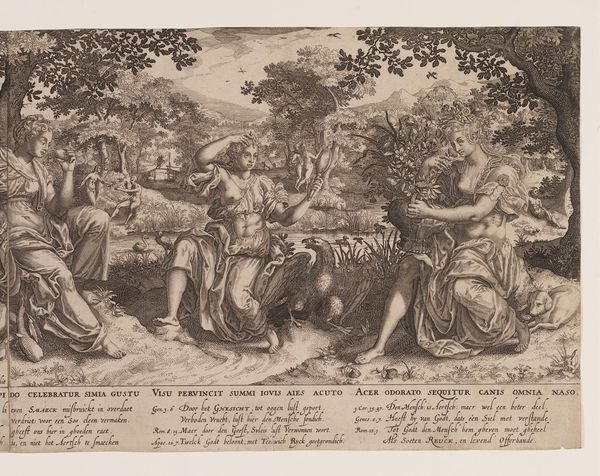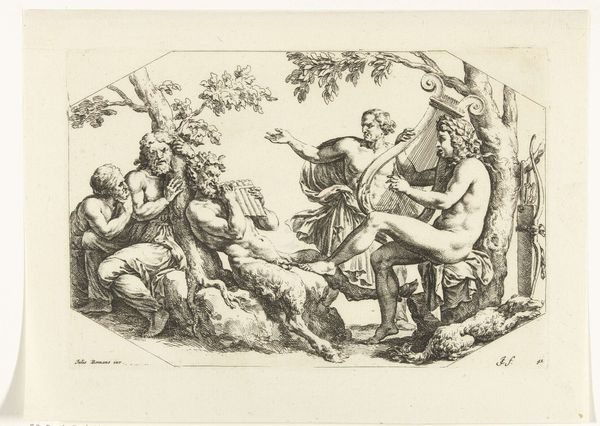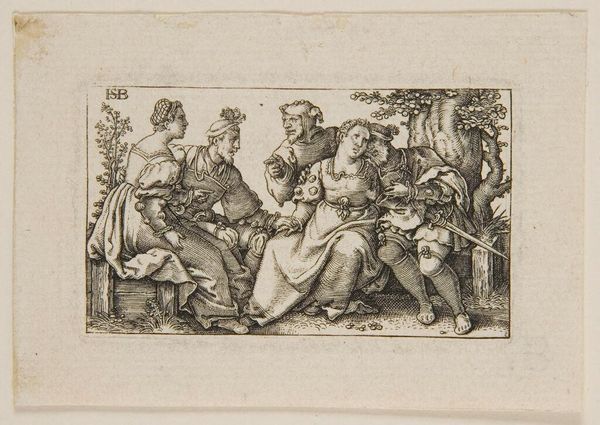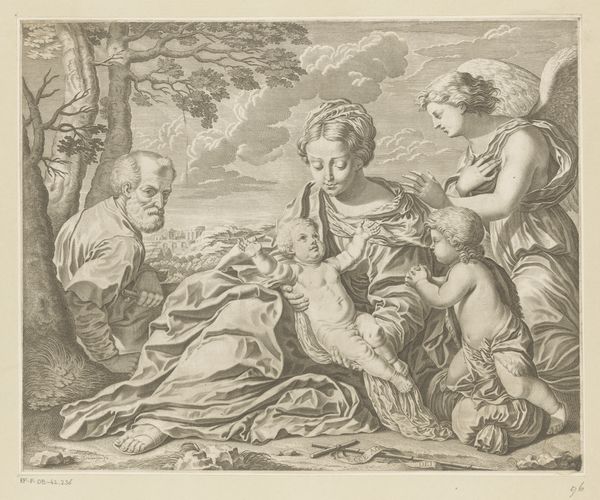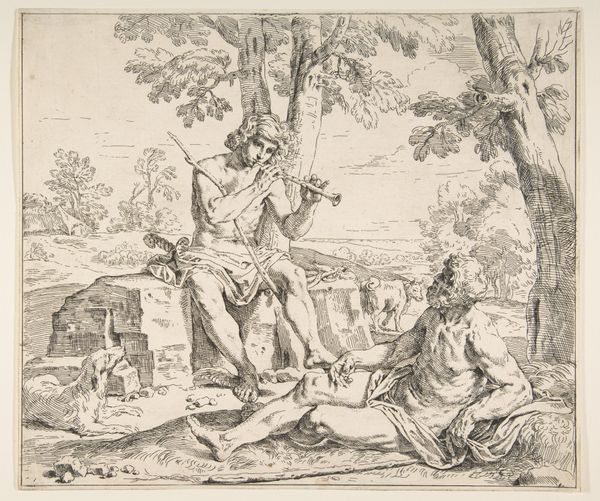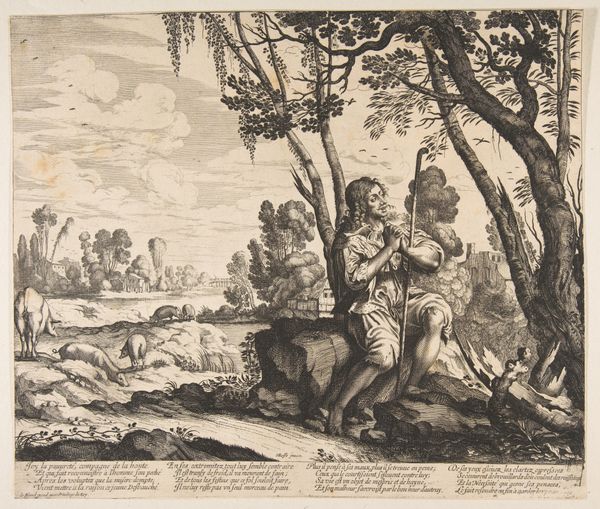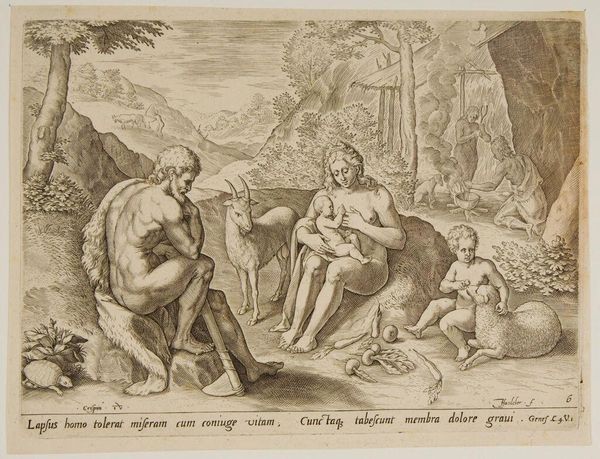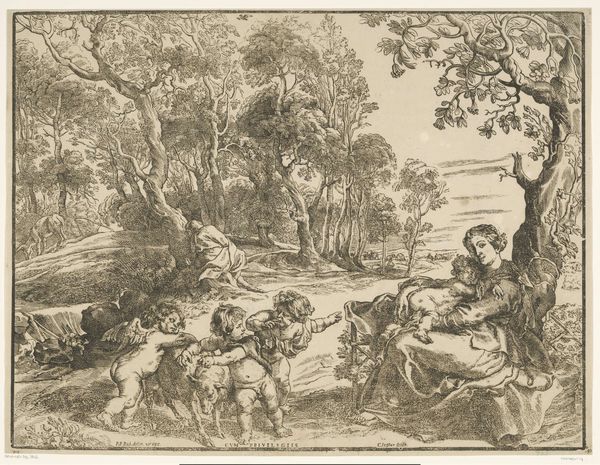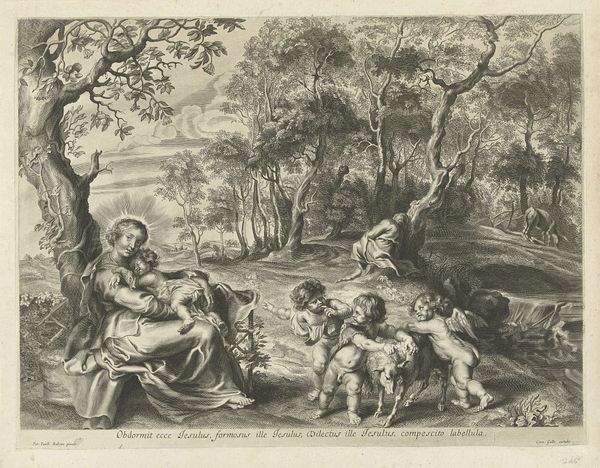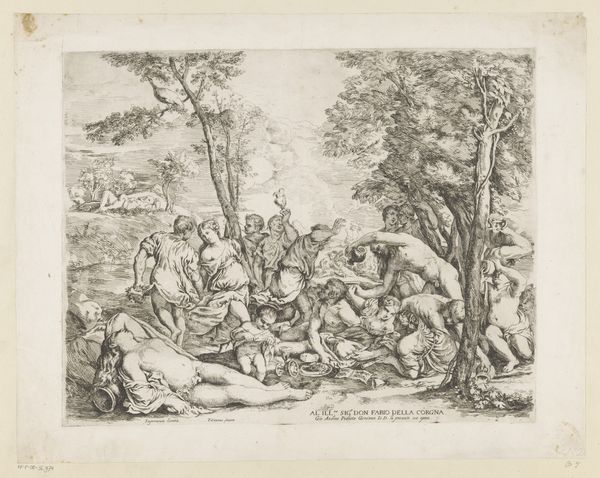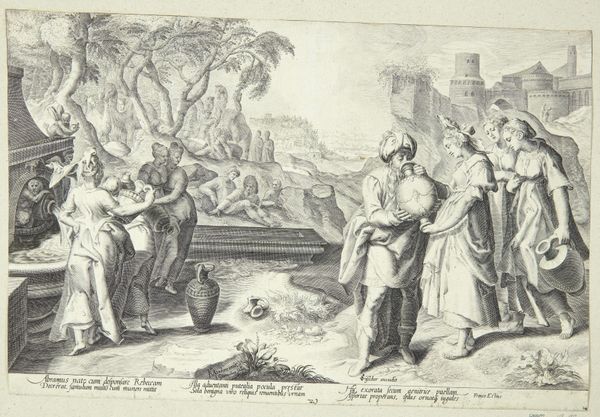
print, etching
#
allegory
#
baroque
# print
#
etching
#
landscape
#
figuration
#
genre-painting
Dimensions: 312 mm (height) x 428 mm (width) (brutto)
Editor: So, this print, "The Five Senses," is from somewhere between 1600 and 1649 and is unsigned, found at the Statens Museum for Kunst. It's got this allegorical feel, but also quite grounded. It seems to depict the senses through figures in a landscape setting. What strikes you about it? Curator: What immediately captures my attention is the way this piece attempts to categorize and compartmentalize human experience. We see the five senses meticulously separated and objectified. Consider how that very act mirrors the societal structures of the time: rigid hierarchies and attempts to define and control human behavior. How do you feel this categorization intersects with gender and class in the work, if at all? Editor: I suppose seeing women embodying some of the senses seems rather old fashioned. Is there more to the representation of women you mean? Curator: Exactly. The allegorical figures embodying the senses are almost exclusively women, aren't they? Think about the historical context. Woman being associated with emotionality, nature, and the body. How might this print reinforce or challenge these stereotypes? And does the relative wealth apparent in these figures provide insights into which specific groups are allowed the pleasure of the five senses at the time? Editor: That's interesting, I didn't see it that way at first. Curator: Furthermore, look at the presence of animals. The deer, the monkey, even the birds. They too, are experiencing the senses, but obviously without the ability to create "art" out of them. The way their experiences differ in power structures of the time opens further avenues for discussion. Editor: I see. So it's not just about the five senses themselves, but about how access and representation were shaped by social hierarchies. Curator: Precisely. The work is very consciously trying to draw correlations that would likely support contemporary power structures of the time, particularly class structures. Editor: This makes me appreciate the image's layers, both artistically and as a commentary on social dynamics. Curator: Indeed, art often serves as a mirror reflecting both the beauty and the biases of its time.
Comments
No comments
Be the first to comment and join the conversation on the ultimate creative platform.
